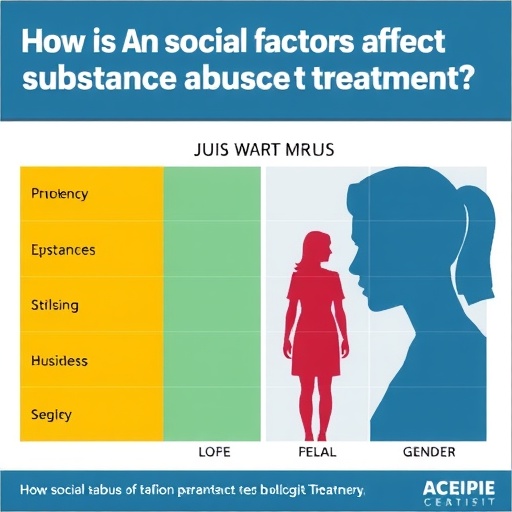Report on U.S. Public Concern Over Healthcare Affordability and its Impact on Sustainable Development Goals
Executive Summary and Key Findings
A recent poll conducted by The Associated Press-NORC Center for Public Affairs Research reveals significant public anxiety regarding healthcare in the United States. These concerns directly impact the nation’s progress toward achieving several key Sustainable Development Goals (SDGs), most notably SDG 3 (Good Health and Well-being). The findings indicate that the rising cost and uncertain accessibility of healthcare are major barriers to sustainable development.
- Widespread Concern Over Costs: Approximately 60% of U.S. adults are “extremely” or “very” concerned about increasing healthcare costs. This financial pressure undermines SDG Target 3.8, which aims to achieve universal health coverage, including financial risk protection.
- Anxieties Over Access and Security: 40% of Americans express deep concern about their ability to pay for necessary care, access services when needed, or maintain health insurance coverage. This highlights systemic vulnerabilities that conflict with the core principles of SDG 3.
- High Issue Salience: Healthcare is considered an “extremely” or “very” important personal issue for 80% of adults, placing it on par with the economy and indicating a strong public mandate for institutional action, as called for in SDG 16 (Peace, Justice and Strong Institutions).
Implications for Sustainable Development Goal 3: Good Health and Well-being
The poll’s findings present a direct challenge to the realization of SDG 3, which seeks to ensure healthy lives and promote well-being for all at all ages. The reported public sentiment points to critical gaps in the U.S. healthcare system’s ability to meet this global objective.
- Universal Health Coverage (Target 3.8): The pervasive fear of rising premiums and the potential loss of insurance coverage for millions demonstrates a significant deviation from the goal of universal health coverage. The instability described by individuals reliant on ACA marketplace plans exemplifies the precarity that SDG 3 aims to eliminate.
- Financial Risk Protection: Concerns about affording both care and medication indicate that the current system fails to provide adequate financial protection, pushing individuals and families toward financial hardship and potentially poverty, which contravenes the goals of both SDG 3 and SDG 1 (No Poverty).
- Access to Quality Essential Services: Anxiety over the ability to access care when needed suggests that affordability is a primary barrier to essential health services, a foundational component of a functioning and equitable health system as envisioned by SDG 3.
Broader SDG Context: Inequality and Institutional Failures
The challenges in the U.S. healthcare landscape extend beyond SDG 3, touching on fundamental issues of equality and governance.
- SDG 10 (Reduced Inequalities): The deep ideological divide on the government’s role in providing healthcare, with disparate views across political lines, reflects and perpetuates inequality. The potential for policy changes to disproportionately affect lower-income individuals or those with pre-existing conditions works against Target 10.3, which is to ensure equal opportunity and reduce inequalities of outcome.
- SDG 16 (Peace, Justice and Strong Institutions): The report of a congressional deadlock, a government shutdown linked to healthcare subsidies, and widespread public distrust in political parties to handle the issue points to a weakness in institutional effectiveness (Target 16.6). The sentiment that lawmakers are not working toward solutions undermines the goal of developing effective, accountable, and transparent institutions.
Political Climate and Public Trust
The political environment is a significant factor exacerbating public anxiety and hindering progress on health-related SDGs. Public sentiment reflects a lack of confidence in the current political leadership and institutions to address these critical challenges.
- Low Approval and Trust: Only 30% of U.S. adults approve of the president’s handling of healthcare. Furthermore, a significant portion of the public (approximately 25%) trusts neither major political party to manage the issue, with independents being particularly skeptical.
- Policy Uncertainty: Federal policy debates, including proposed cuts to health programs and the uncertain future of ACA subsidies, create an unstable environment for millions of citizens. This policy volatility is a key driver of the anxieties captured in the poll and is antithetical to the long-term, stable planning required to meet SDG targets.
1. SDGs Addressed or Connected to the Issues
-
SDG 3: Good Health and Well-being
The article is fundamentally about health. It directly addresses public concern over the accessibility, affordability, and quality of healthcare services. The core issues discussed, such as rising costs, fear of losing insurance, and inability to pay for medication, are central to ensuring healthy lives and promoting well-being for all ages.
-
SDG 1: No Poverty
The article connects high healthcare costs to financial vulnerability. The fear of “skyrocketing health insurance premiums” and not being able to pay for necessary care highlights how health-related expenses can push individuals and families into poverty or financial hardship. The discussion of cuts to federal health care and food assistance programs further links health policy to economic stability for the vulnerable.
-
SDG 10: Reduced Inequalities
The article touches upon inequalities in access to healthcare and the differing impacts of policy changes. It notes the particular concerns of “working-class Americans” and reveals a “deep ideological divide” on the government’s role in ensuring healthcare for all. This points to the broader issue of how social and economic status affects health outcomes and access to care.
-
SDG 16: Peace, Justice and Strong Institutions
The article highlights a crisis of faith in public institutions. The “congressional deadlock,” “government shutdown,” and public sentiment that lawmakers “don’t really care” point to challenges in institutional effectiveness and accountability. The poll results showing that many Americans “trust neither party” on healthcare underscore a lack of confidence in the government’s ability to be responsive to citizen needs.
2. Specific SDG Targets Identified
-
SDG 3: Good Health and Well-being
-
Target 3.8: Achieve universal health coverage, including financial risk protection, access to quality essential health-care services and access to safe, effective, quality and affordable essential medicines and vaccines for all.
This target is the most relevant. The article’s focus on Americans being “worried about health care becoming more expensive,” concerned about “not being able to pay for health care or medications,” and fearing the loss of health insurance directly relates to achieving universal health coverage and financial risk protection. The debate over Affordable Care Act (ACA) subsidies is a clear example of a policy mechanism aimed at making healthcare affordable.
-
-
SDG 1: No Poverty
-
Target 1.3: Implement nationally appropriate social protection systems and measures for all, including floors, and by 2030 achieve substantial coverage of the poor and the vulnerable.
The article discusses several social protection systems, such as Medicare, ACA marketplace plans, and federal subsidies. The threat of these systems being undermined by “cuts more than $1 trillion from federal health care” or a “congressional deadlock over Affordable Care Act subsidies” directly impacts the stability and coverage of these social safety nets.
-
-
SDG 10: Reduced Inequalities
-
Target 10.4: Adopt policies, especially fiscal, wage and social protection policies, and progressively achieve greater equality.
The political debate described in the article over federal funding, subsidies, and the government’s role in healthcare is a direct reflection of the challenges in adopting social protection policies to achieve greater equality. The “deep ideological divide” mentioned shows the difficulty in creating and sustaining policies that ensure equitable access to healthcare for all citizens, regardless of their political affiliation or economic status.
-
-
SDG 16: Peace, Justice and Strong Institutions
-
Target 16.6: Develop effective, accountable and transparent institutions at all levels.
The article implies a failure to meet this target through its reporting on public perception. The finding that “many trust neither party” on healthcare and the quote from a citizen stating, “My faith that something will get done is very, very low,” suggest that government institutions are perceived as ineffective and unaccountable in addressing a key public concern.
-
3. Indicators for Measuring Progress
-
Indicator 3.8.1: Coverage of essential health services.
This indicator is implied when the article discusses the risk of “millions of people losing health insurance coverage” due to policy changes. The number of people with or without health insurance is a direct measure of health service coverage.
-
Indicator 3.8.2: Proportion of population with large household expenditures on health as a share of total household expenditure or income.
This is strongly implied by the article’s central finding from the AP-NORC poll. The fact that “About 6 in 10 Americans are ‘extremely’ or ‘very’ concerned about their health costs going up” and “about 4 in 10 Americans are ‘extremely’ or ‘very’ concerned about not being able to pay for health care” serves as a proxy for measuring the financial burden of healthcare on households.
-
Indicator 1.3.1: Proportion of population covered by social protection floors/systems, by sex, distinguishing children, unemployed persons, older persons, persons with disabilities, pregnant women, newborns, work-injury victims and the poor and the vulnerable.
This is relevant to the discussion of programs like Medicare (for older persons), ACA subsidies (for the vulnerable), and potential cuts that would lead to millions “losing their health insurance altogether.” The number of beneficiaries of these programs is a direct measure for this indicator.
4. Summary Table of SDGs, Targets, and Indicators
| SDGs | Targets | Indicators |
|---|---|---|
| SDG 3: Good Health and Well-being | Target 3.8: Achieve universal health coverage, including financial risk protection, access to quality essential health-care services and access to safe, effective, quality and affordable essential medicines and vaccines for all. |
Indicator 3.8.1 (Implied): The number of people at risk of “losing health insurance coverage.”
Indicator 3.8.2 (Implied): The poll data showing “6 in 10 Americans” are concerned about rising costs and “4 in 10” are concerned about their ability to pay for care. |
| SDG 1: No Poverty | Target 1.3: Implement nationally appropriate social protection systems and measures for all… and achieve substantial coverage of the poor and the vulnerable. | Indicator 1.3.1 (Implied): The number of people covered by social protection systems like Medicare and ACA subsidies, which are threatened by federal cuts and political deadlock. |
| SDG 10: Reduced Inequalities | Target 10.4: Adopt policies, especially fiscal, wage and social protection policies, and progressively achieve greater equality. | The article implies this through the discussion of the “deep ideological divide” over the government’s role in providing healthcare, which directly impacts the adoption of policies aimed at equality. No specific numerical indicator is mentioned. |
| SDG 16: Peace, Justice and Strong Institutions | Target 16.6: Develop effective, accountable and transparent institutions at all levels. | Implied by poll results showing low public trust, with a significant portion of the population trusting “neither party” on healthcare, and descriptions of institutional failures like the “government shutdown” and “congressional deadlock.” |
Source: apnews.com






